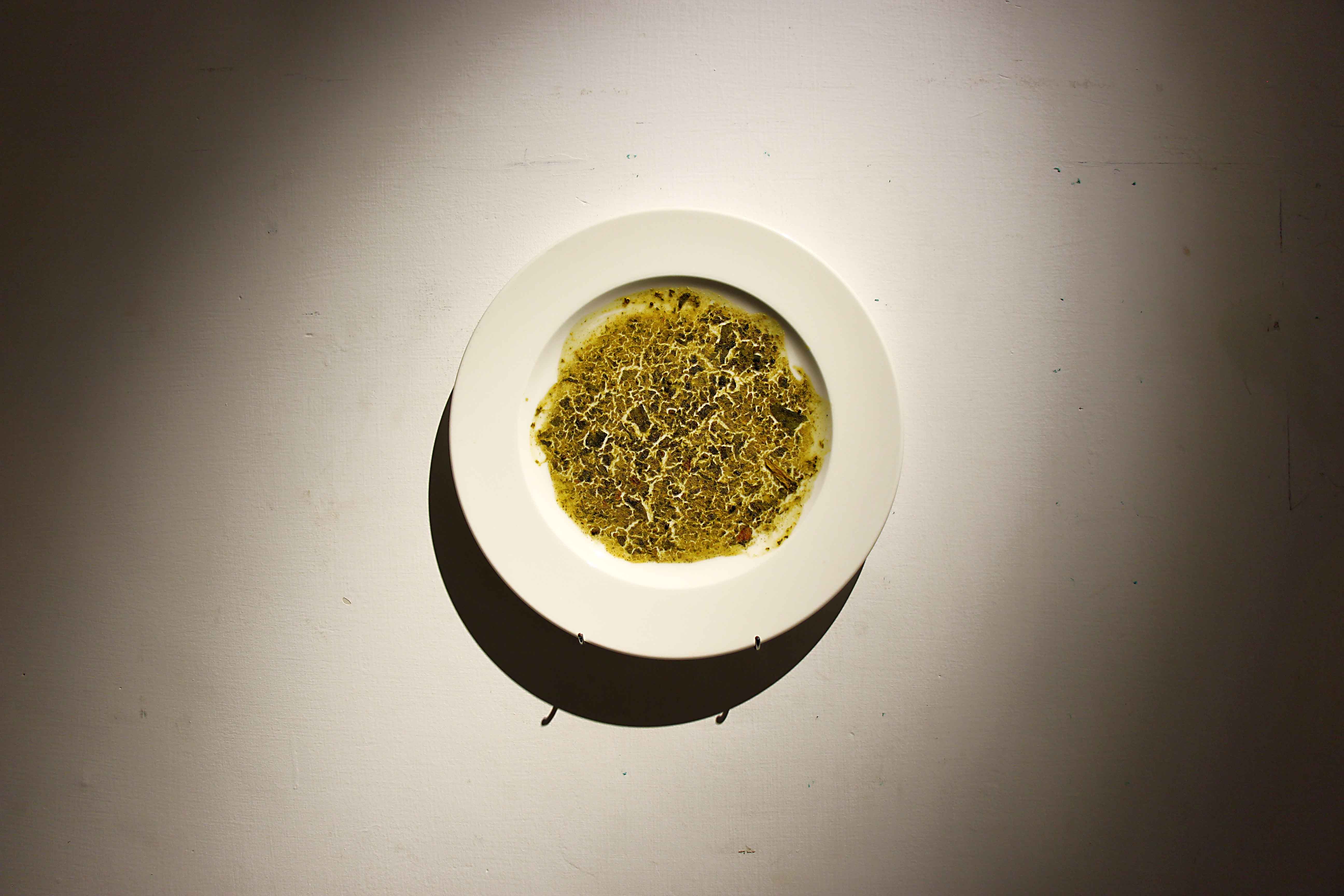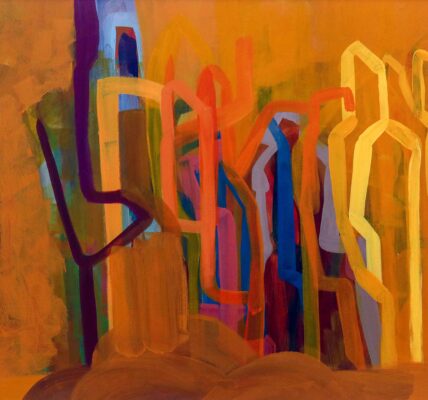“You can take the boy out of the country,
but you can’t take the country out of the boy”
The famous English saying (debatable authorship) brings in notions of the postindustrial phase of human settlements using ‘country side’ as a metaphor. Here the word country is largely used as a taunt for the supposedly naïve people who believe in the agrarian life as opposite to the cities and advancements. The Western grand narratives invoked colonialism and capitalism under the pretext of development and civilisation. It asserts attitudes towards nature as Indigenous, historically, and culturally conditioned and derives from the constantly exposed concepts of nature and culture dualism while articulating the imbalance in the ecosystem. The task of taking the boy out today remains the job of capitalists. Art, which is a byproduct of culture, brings in negotiations (though ambiguous) between dualities of the lived and represented in the country/city binary. We come across words like habitat, ecosystem, biodiversity, environment , territory, biopolitics, and so on to discourse on artistic practices that call for gestured meanings rather than the comfort of allegory of the ‘country side’.
Till the end of the 18th century, nature was perceived as a muse, as picturesque country side and landscape art across centuries addressed nature as ‘the other ’, as an object of beauty, and as a channeller of symbolism. Therefore, man played the intruder rather than a participant within nature (Greg M Thomas & Theodor Rousseau, Art & Ecology in 19th-century France). Edwin Church‘s studies of icebergs call out his luring attraction towards nature, but on the other hand, Casper Friedrich and Turner portray a revolting nature. Though they do not have a direct dialogue between the ecosystem and the environment, a pan-optical vision of all the landscape art until the 19th century can lead us to an understanding of environmental changes. The historical modification of nature and resultant environmental changes and degradation have captured the global contemplation, concern, and anxiety from the last few decades.
Towards the 20th century, we come across various artists addressing environmental issues, thereby moving from human-centric to biocentric discourses through art and activism. Most noted among earth artists is Andy Goldsworthy, whose earthworks bring in biodegradable materials like flowers, leaves, wooden logs and stones and a sense of site specificity. Joseph Beuys, with his 7,000 oak trees, attempts forestation of the city and brings in parallels as well as deviates from Tagore’s Vriksharopan festival in Shantiniketan, where it reechoes the indigenous notion of cultural resistance of environmental discrepancy. Nevertheless the ideas around ecology today expands to a wide range of readings and imageries such as cultural, ethnographic, post-colonial, geological and anthropological.
The idea of a reciprocating nature can be witnessed in Olafur Eliasson’s River Bed (2014) at the Louisiana Museum which brings an entire rocky landscape and a thin stream of water in to the white cube illustrating nature’s way of recapturing its possessions from human constructions. As the spectator walks through the river bed, s/he becomes part of the Icelandic landscape rather than a mere onlooker or visual intruder of landscapes on the walls. The tactile river bed remains a simulation of the original with its lack of ecosystem around it. Jakkur Lake Tales (a series of photographic and video archives of Jakkur Lake from 2007, supported by Public.Art.Ecologies, at BAR I, Bangalore 2011) by artist Surekha Sharada from Bangalore brings in activism for a re-envisioned rural ecosystem that was disturbed due to the development of modern dwellings and infrastructure around the lake. The video installation conveys on the disappearing migratory birds, cranes, other aquatic birds, and fish due to the sewage pollution poured down to the lake. The work with its urban-rural binary calls for the metaphor of ‘boy no more identifies with his own countryside’. Though both the above artists’ works share an archival nature, the latter expresses concern for ecological heritages beyond ‘boy of country side’ attitudes.
Pollution is another ecological concern raised by artists in contemporary times. ‘Polluted Water Popsicles’ (2017), a semi-interactive work by art students from the National Taiwan University of Arts, had frozen treats made from actual polluted waters from different sources, almost announcing the dangers of a revolting nature that humans will be forced to consume in the near future. While this is associated with geopolitics and consumerism, Bangalore-based artist Prasad K.V.’s installation ‘Holy Synthetic’ (2019), created with cow dung and fragments of plastic waste, addresses the reciprocation of nature with a twist on the culturally originated idea of cow dung being considered holy in India. It also brings in a pun on the ‘plasticity’ of culture and its interruption in nature. This evokes an irony of the popular notion of culture as a stagnant entity, and the plasticity here also calls for divinities and devotional products that are accepted in spite of being made in synthetic, or is synthetic the new holy? These bring in larger dialogues on interruption in nature in both material and metaphysical terms.
Amar Kanwar’s The Sovereign Forest (2011) aims at the preservation of Indian environmental heritage. One among the displayed was a book made of threads, seeds, plant fibre and an actual projection of vanishing trees of India. With the appearance of the manuscript, the work acts as a prophecy on the predestination of certain species of flora and fauna. This contrasts with Bangalore-based artist Supriyo Manna’s series of works Harvest of Trust which had four displays (at Extended Pedagogy of Art, CFA, CKP, Bangalore, 2022), consisting of courses on-site (weeds collected from unique sites) that contextualize geography, ecology and a sense of anthropology. The weeds in the packets were used by particular communities to cook and as medicinal plants which vanished over the time with encroachment of so-called mainstream cultures. It calls out practised cultural amnesia through an archival lens. His research extends to ideas of entropy and negentropy in living and posthumous materials in his immediate surroundings. The work A Hungry Moon (with a plate of leftover Bas saaru- a native recipe with weed) discourses on cultural practices around certain weeds with alternative narratives of these not-so-commonly used plants. The indigenous botanic knowledge and its journey till food on the plate is an ideological structure that Supriyo’s works parallel with another contemporary artist Sujit Mallick’s (Delhi) work ‘Vanishing Spices’ (2021-22) which was a part of The Earth Studio farm project at Ghaziabad, UP. It was a community project collaborated with artists, Agriforum organised by FICA/SSAF and the Ecologies & Community Art program. The project addressed soil layering, seed migration, moss growth, species extinction and identification of certain weeds as food substitutes during the crisis in the village. It focused on a self-sustaining ecosystem with mobilized ground along with activist attitudes and metaphors that bring in anthropology, ethnography and geopolitics which come along with metaphors deploying native and migrant seeds. These site-specific engagements not only evoke questions on political ideas of land and preserving ethnographic knowledge but also bring in indigenous dialogues in a state of post-colonial globalization.
‘Kanaja’ (translated as grain storage) by Dayanand Nagaraju (displayed at 1Shantiroad Gallery/Residency, Bangalore, 2022) co-relates with ecology, farmer lives, and the trajectory of food supply. Hailing from a background of farmers, he looks at the agrarian practices in his community as well as capitalised cropping and food consumption modes. The huge interactive installation created with rice sacks in the shape of a well reminds me of one of the Parisian catacombs. His work concerns access to food and an agrarian economy, which bring in the food chain supply, and notes on the realistic and imbalanced lives of farmers, which are byproducts of geological forces and capitalist power structures.
Indian artists’ recent turn towards ecological projects with a sense of community and as resistance/answer for the capitalised nature and politicised ecology can be associated with the Guattarian sense of ecosophy, where the gestural aspects transform into visuals, but even more corporeal effects. Their innovative way of conceptualising ecology is not only akin to an activist mode of preservation of ecological heritages, pollution control, ethnographic negotiations, and cultural geography but also most of them are community interaction-based artworks, almost countering the modernist nature of individualism to collaborative practices.
Reintegrating nature into art can be traced since Levi Strauss’s non-dualism of nature and man and dialectics on the environment and shifting connotations of ‘nature’ by Adorno and Horkheimer. Terms like ecology and environment were only coined around the mid-19th century for an aspect that was roughly called nature. To illustrate, the term ‘environment’ was coined in 1828 (with its present meaning of man being within it) by Carlyle while translating a book by Goethe. This gives us the idea that the environmental concerns turned into realisation post-industrialisation with the convenient oblivion of agriculture itself as man’s first step towards countering the attitudes of nature. These tendencies lead to a chase for alternative ecosystems elsewhere on the moon or on Mars, as illustrated in the film Martian. In environmental issues we often address the exterior flora and fauna and their attitudes towards nature, and it is ambiguous whether evolving human minds and actions towards an endless comfort towards concrete and plastic surroundings are part of this eternal conscience of nature. These new definitions also place us on the edge of self introspection to opt for saving ecology through new myths, rituals, belief systems, and new visual / gestural narratives. These contemporary art practices, along with its tendencies to gradually move away from white cube cultures, also house ambiguity and queries like if art’s direct interaction with the archival of nature (both presence and absence), community-based, gestural, and green practices take it back to traditional ecological traditions with only textual articulations to reclaim its artistic status? Or remain suspended between actual ecological issues and art as an autonomous entity with its own ever-changing zeitgeist/taste of time?
Read More>> Please Subscribe our Physical Magazine



